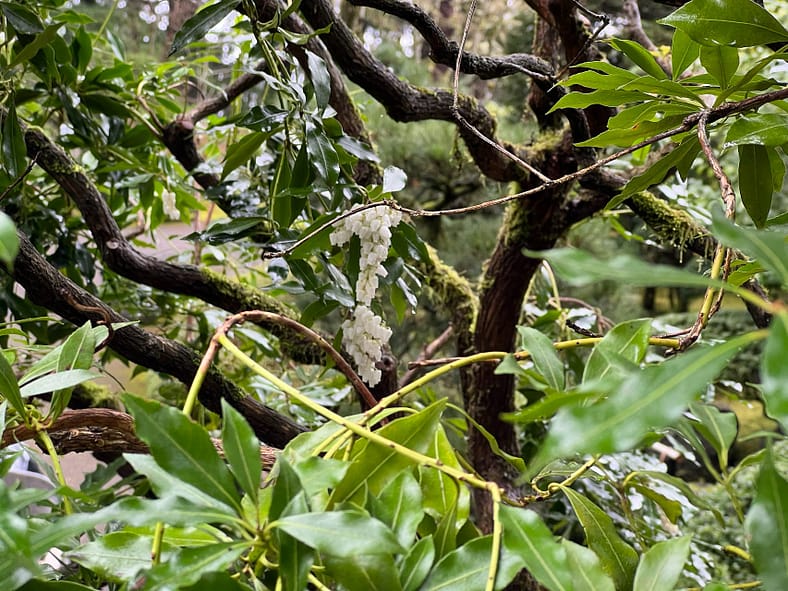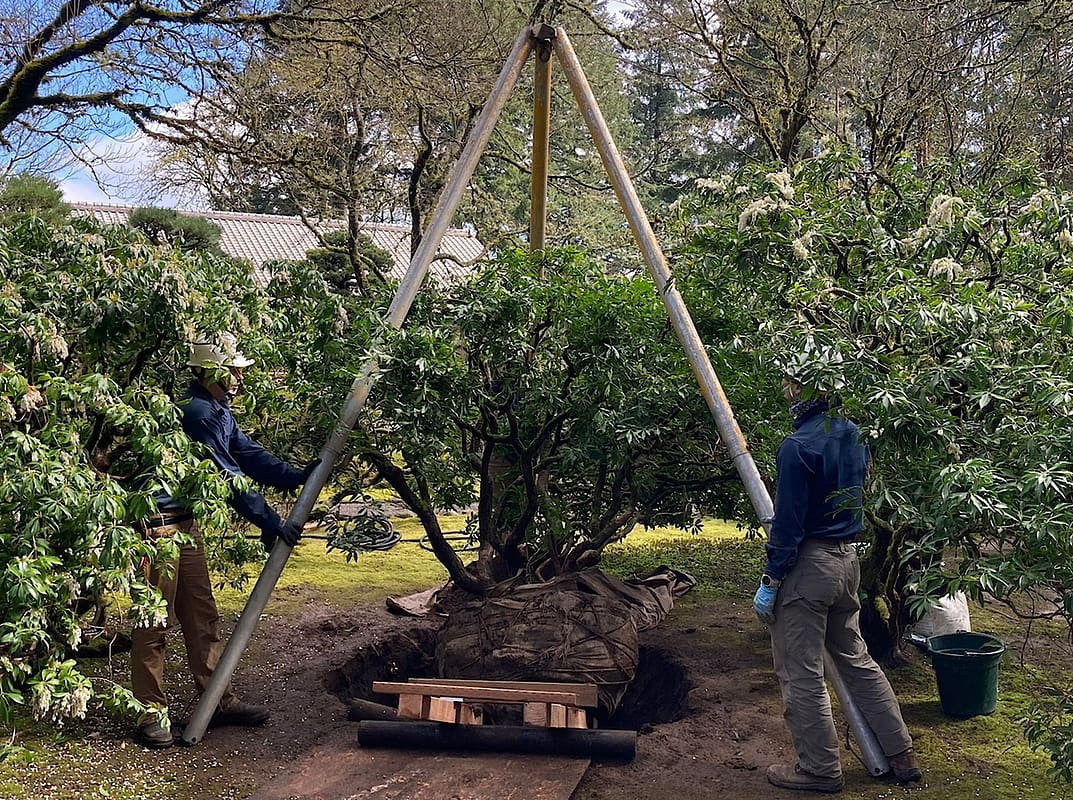Approaching the Flat Garden in spring, one cannot help but notice the dramatic Weeping Cherry that reaches out in flourishes of luminous pink. This display of incredible color is so visually arresting that Portland Japanese Garden’s original designer, Professor Takuma Tono of Tokyo Agricultural University, determined only one should be planted here. The Weeping Cherry’s presence belies the fact that other beautiful flowering plants also bloom this time of year, including one pieris which recently took a short voyage from one area of the Flat Garden to another.

Pieris (Pieris japonica), known by some as Japanese Andromeda or 馬酔木 (asebi), is native to the mountains and hillsides of the islands of Honshu, Kyushu, and Shikoku in Japan. It is a broadleaf evergreen plant with wood that has been used as fuel and crafting material for instruments, among other uses. Because of its toxins, pieris is rarely eaten by wild mammals, leading to a proliferation of its airy white bell-shaped flowers and pinkish-red foliage in eastern Asia.
Pieris appears in a few different places throughout Portland Japanese Garden. One shrub, already sporting its small white flowers, had to be moved as its leaves were yellowing due to poor drainage. The first step involved the removal of soil from around its root ball. After this, Garden Curator Hugo Torii and his gardening staff turned to tools common in Japanese gardening.
The first such tool was a san-mata—a tripod with a hoist at its center, allowing for the lifting of hefty items where heavy machinery may be too disruptive to more delicate garden features like moss. From there, the gardeners used koro, rolling round posts, placed under a sleigh on which the shrub sat. The pieris was then rolled a few feet away to a new space within the Flat Garden and situated among larger versions of itself.
Torii explained the pieris was planted with a technique called mizu-gime, or water planting. “We refill soil halfway where we transplanted the pieris and then filled out air pockets with both soil and water,” he noted. This helps prevents taproots from drying. While the plants of Portland Japanese Garden may appear to be permanently fixed, transplanting is a regular practice of the gardening staff. “We move around plants to maintain balance as a whole as the garden ages,” Torii added.

For now, the spot where the pieris once grew will remain vacant. Torii notes, however, it could be filled with new life if a proper match is found during any of the number of regular nursery visits he and his staff make. He also notes that it could remain a “happy void” that will allow visitors to “appreciate the view of the beautiful trunks of hinoki just behind.”
Now in its new location, the pieris will receive the same treatment as the others of this variety. Left untended, pieris become replete with white flowers, too many for a Japanese garden where the serene shades and textures of green are prioritized.



